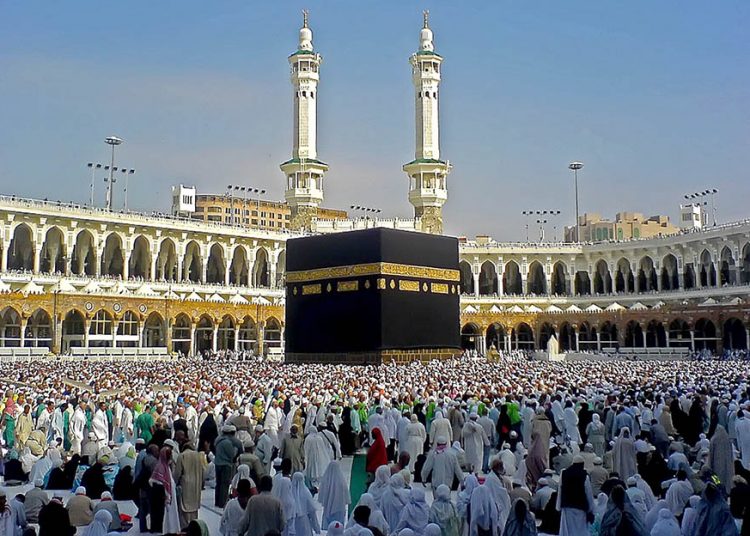The Muslim population in some European countries could triple by 2050 while it will barely change in others, according to new projections released by the Washington-based Pew Research Centre. www.theguardian.com report
The report, Europe’s Growing Muslim Population, shows a stark west-east divide. The Muslim share of Germany’s population could grow from 6.1% in 2016 to 19.7% in 2050 if high migration continues, whereas over the border Poland’s share would change from 0.1% to 0.2% in the same scenario.
Even if all current 28 EU members, plus Norway and Switzerland, closed their borders to migrants, the Muslim population share in the west would continue to grow owing to a younger age profile and higher fertility rates, but remain very low in the east.
According to Pew’s data, Muslims made up 4.9% of Europe’s population in 2016, with an estimated 25.8 million people across 30 countries, up from 19.5 million people in 2010. The number of Muslim migrants arriving in Europe surged after 2014 to almost half a million annually, largely due to people fleeing conflicts in Syria, Iraq and Afghanistan.
Researchers considered three scenarios: zero migration between 2016 and 2050; medium migration, in which the flow of refugees stops but people continue to migrate for other reasons; and high migration, in which the record flow of migrants between 2014 and 2016 continues indefinitely with the same religious composition.
In the zero migration scenario, the Muslim population in Europe is expected to rise from 4.9% to 7.4%. Apart from Cyprus, which has a high Muslim share (25.4%) due to the historical presence of Turkish Cypriots in the north of the island, France would have Europe’s biggest share of population with 12.7%, up from 8.8%.
In the medium migration scenario – perhaps the most likely – Sweden would have the biggest share of population at 20.5%. The UK’s share would rise from 6.3% in 2016 to 16.7%. Finland’s Muslim share would grow from 2.7% to 11.4% and most western European countries would face a big jump.
If high migration continues until 2050, Sweden’s Muslim share will grow to 30.6%, Finland’s to 15% and Norway’s to 17%. In eastern Europe, most countries will continue to have a relatively low Muslim share of population, with only Hungary and Greece seeing significant increases from 2016.
Apart from migration, the number of Muslims in Europe is set to grow considerably through natural increases. Europe’s Muslims have more children than members of other religious groups, or people of no religion, the study shows. The European average fertility rate is 2.6 for Muslims compared to 1.6 for non-Muslims.
The Muslim population is also much younger than non-Muslims. The proportion of Muslims under the age of 15 is 27%, nearly double the proportion of under-15 non-Muslims at 15%.
“While Europe’s Muslim population is expected to grow in all three scenarios – and more than double in the medium and high migration scenarios – Europe’s non-Muslims, on the other hand, are projected to decline in total number in each scenario,” says the Pew report.
Historically, a relatively small share of migrants to Europe were refugees from violence or persecution, with most coming for other reasons. Nearly half of all recent migrants to Europe were non-Muslims, with Christians making up the next largest group.
Source www.theguardian.com













